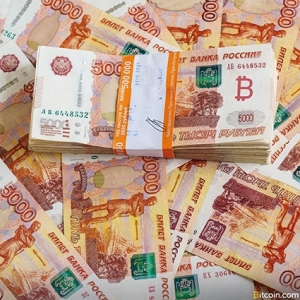Russia’s Economic Offensive in Central Asia
Recent months have seen a wave of Russian economic moves in Central Asia which are likely to increase Moscow’s geopolitical clout in the region.
On October 19, the Russian President Vladimir Putin, with a large team from almost every sector of the Russian economy, visited Uzbekistan. The state visit brought about a record number of long-term and short-term strategic projects, the largest of them an $11 billion nuclear power plant. Overall, Putin’s team signed 785 agreements and memorandums, altogether worth $27.1 billion, which is the biggest overall sum that the Uzbek President Shavkat Mirzyoyev has signed since he came to power in 2016. This sum of potential investments even outstrips what Mirzyoyev reached when he visited China.
This Russian economic offensive in Uzbekistan followed other political decisions made by Moscow in the past year and a half. Russia, for instance, agreed to military concessions to Tashkent that up until that point were available only to full members of the major Russia-led organizations such as the Eurasian Economic Union (EEU) and the Collective Security Treaty Organization (CSTO). Russia began to sell military hardware to Tashkent at domestic prices, which makes Uzbekistan the only non-CSTO country in the post-Soviet enjoying this privilege.
Both countries have increased their military cooperation and held their first bilateral military exercise in 2017, after a 12-year pause under the former Uzbek President Islom Karimov.
At the same time, Russians have made interesting moves in the neighboring Turkmenistan.
Ashgabat’s relationship with Russia’s Gazprom has always been difficult over gas which the country sold to the Russians. In early January 2016, Gazprom stopped purchasing Turkmen gas. This put Ashgabat in a difficult position, with no other major buyers except for China.
This changed on October 9, 2018 when Gazprom CEO Aleksei Miller visited Turkmenistan and both sides agreed Gazprom will resume buying Turkmenistan’s gas from January 1, 2019. It is also interesting that the agreement follows the resolution on the Caspian Sea. Officially, no third party can intervene if Turkmenistan and Azerbaijan decide to build the Trans-Caspian Pipeline (TCP). Fear on the Russian side that Ashgabat might succeed in selling its resources to other regions might have been a driver behind Miller’s visit and the agreement.
In a way, this Russian economic offensive in the Central Asian region is not surprising. You increase your influence where it is possible, where geopolitical space allows you to do so. When looking at the map of Russia, there are three discernible geopolitical areas which have historically attracted Russian economic and political attention: Eastern Europe, the South Caucasus and Central Asia. However, over the past decades there have been developments which show how constrained the Russian ability to expand its influence in some regions of its neighborhood has become.
The current crisis between Russia and the West, the product of many fundamental geopolitical differences in both the former Soviet space and elsewhere, is likely to remain well into the future, barring large concessions by one of the sides. Thence come Russian failures on its western border which diminished Moscow’s projection of power even throughout what constituted the former Soviet Union territory. Essentially, Russia’s modern western borders are nearly at the same level as it was in the pre-Peter the Great period in the late 17th century.
Russia has also reached the limit of its geopolitical expansion in the South Caucasus. Armenia, due to its difficult relations with Azerbaijan and Turkey, will remain Moscow’s close ally, while Azerbaijan is unlikely to join Russia-led unions as Baku has its own resources to build a more or less independent foreign policy. Even with relations with Georgia, both Tbilisi and Moscow have reached a stage where neither of the sides wants to concede.
It is clear that Georgia is strongly pro-European due to the popularity of political parties and more importantly, large anti-Russian sentiment. In Ukraine too, Moscow is very unlikely to push further with its military involvement in Donbas and hopes for change in Kyiv which might bring in a pro-Russian government. Large-scale geopolitical disturbances could usher in changes positive for Moscow, but there is no real basis for this as the US and EU pressure on Russia is increasing.
Thus, the successful western expansion into what was always considered the “Russian backyard” halted Moscow’s projection of power and diminished its reach to the north of Eurasia. True that this does not mean that Russia will not be playing an important role in the affairs of Ukraine or the South Caucasus countries, but it nevertheless shows that the only region out of three crucial geopolitical arenas where Moscow can still hope for more than it has is the Central Asian region. Other geopolitical competitors such as China might hinder Russian advances, but still there is a much larger space for Russian actions. Unlike in Ukraine or the South Caucasus, Western influence in Central Asia is minimal, making it the only region Russia can hope to enhance its position in.
By Emil Avdaliani
Image source: news.bitcoin.com











